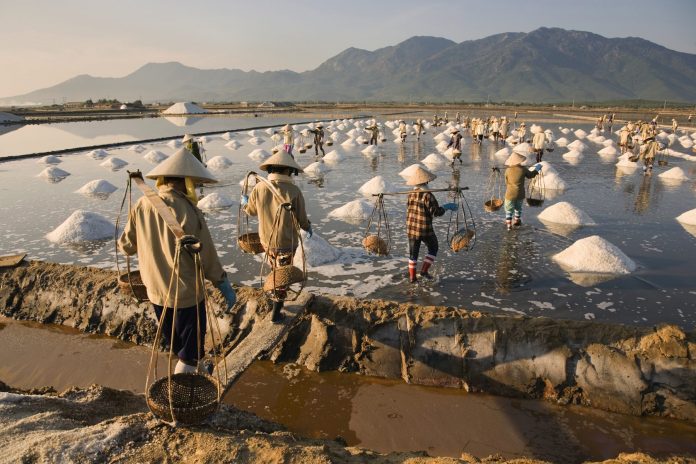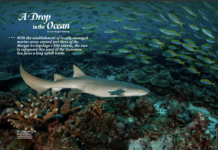Where raindrops come to dry
Text YD Bar-Ness
The flattest, brightest, and most surreal landscapes are also the saltiest and the most inhospitable. On dry land, most rainwater makes its way by gravity through stream and lake and river down to the ocean. Even when it sinks into the ground out of sight, a raindrop will join the subterranean flow of water downhill to the sea.
But in some strange places, the raindrop’s flow is futile and leads to no coastline. In these regions, it will rejoin the ocean only after it evaporates. The raindrop may join the waters of a salt lake, but eventually it evaporates leaving behind the minerals that it picked up on its journey. When the incoming water flow changes, a salt lake can dry out and become a flat plain – a salt pan, or salt flat. These hypersaline places seem, at first glance, alien and lifeless.
A geography of salt
Saline environments can be found on all continents. They can occur in places where ocean water is trapped on dry land:
• Trapped ocean in depressions
The Dead Sea between Israel and Jordan is the most notable; two million years ago it was connected to the ocean. It is now the lowest dry point on Earth, at 429 metres below sea level. As the water level drops due to increased irrigation from the Jordan River, this point becomes lower and lower. On a much smaller scale, a hypersaline pool can form in the centre of an oceanic coral atoll, such as the French Polynesian island of Niau.
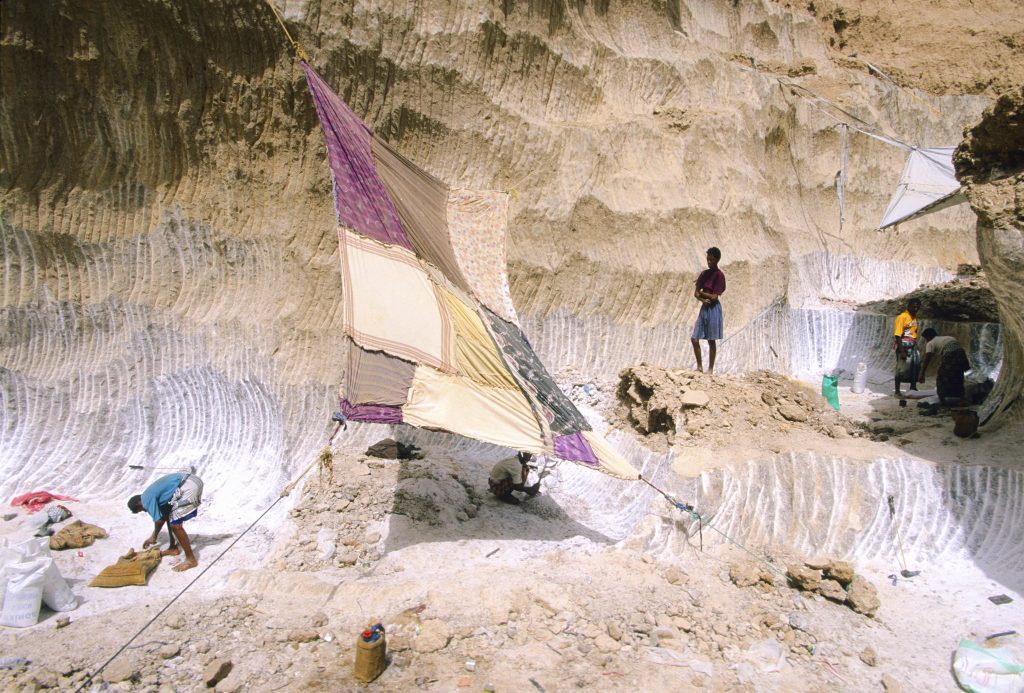
• Receding seas along dry coasts
Known in Arabic as sabkha, one type of salt flat can be found as the remnants of lagoons in desert coastlines, and appears in the depressions between sand dunes. Saline environments can also be found where rainfall cannot make its way to the ocean, because it is caught in a low area or because it evaporates too quickly:
• River-fed depressions below sea level
The lowlands of the Afar Triangle in Ethiopia, the site of several famous proto-human fossil finds, are some of the lowest places on dry land. The Awash River drains into this portion of the Great African Rift and is unable to find a path out to the ocean.
• Inland terrestrial basins above sea level
This occurs where rivers drain to a trapped basin, such as the Great Salt Lake of North America. These can have wildly fluctuating levels with different amounts of rain- and snowfall.
• Rivers and spring waters draining into dry environments
Rivers draining into the Sahara and the Chilean Atacama desert off of the mountains can peter out before they can reach the ocean. This can also be spring water: Rainfall moving through the sandstone mountains of eastern Australia collects in the world’s largest underground aquifer and spring-wells out in the arid centre to evaporate under the sun.
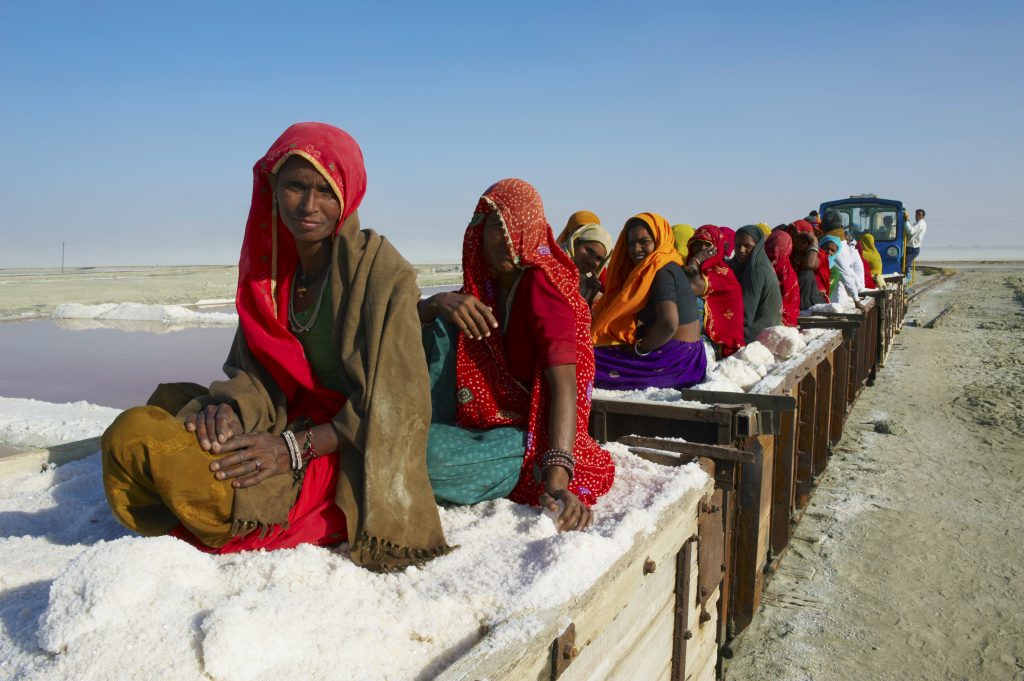
Places of extreme salt
Found on every continent, saline locations are often associated with the deserts at 30 degrees latitude. The saltiest body of water is the Don Juan Pool in Antarctica, which is almost half salt. Its salinity is so high that it never freezes.
Several significant salt lakes are found in Asia. The world’s largest lake, the Caspian Sea, is a salt lake, although it is less than half the salinity of the ocean. It is also the site of significant oil reserves, and as such is valued greatly by the bordering nations of Turkmenistan, Kazakhstan, Azerbaijan, Iran, and Russia.
To the northeast, the Aral Sea, within the former Soviet Union, was once amongst the very largest lakes in the world – but it has now nearly disappeared. Half a century ago, an ill-advised Soviet decision to dam the inflowing rivers led to a massive ecological collapse in this region. The Caspian, the Aral, and the Mediterranean are remnants of the Paratethys Sea, which connected the Atlantic with the Indian Ocean 30 million years ago.
Elsewhere in Central Asia, Lake Balkhash in Kazakstan, Lake Urmia in Iran, Issyk Kul in Kyrgystan, and Qinghai Lake in China are all amongst the very largest salt lakes on Earth. Lonar Lake in Madhya Pradesh, India, is a rare example of a pool formed by an ancient meteor strike on a large expanse of lava. Water that collects in the circular pool evaporates in the hot Central Indian Sun.
Evaporite – what’s left behind
Evaporite is a sedimentary rock with some similarities to sandstone and limestone. Like calcium, salt dissolves in water and is deposited in flat strataunder certain conditions. When ocean or rainwater is trapped in a basin exposed to sunlight, the water will evaporate and leave behind an increasingly concentrated remnant of salt.
Several minerals evaporate from trapped ocean waters, including calcite (the ingredient in limestone), halite (table salt) and gypsum (the main ingredient of chalk). From the trapped terrestrial waters, a more exotic mixture of salts is produced: borates, sulphates, Epsom salts,
and others.
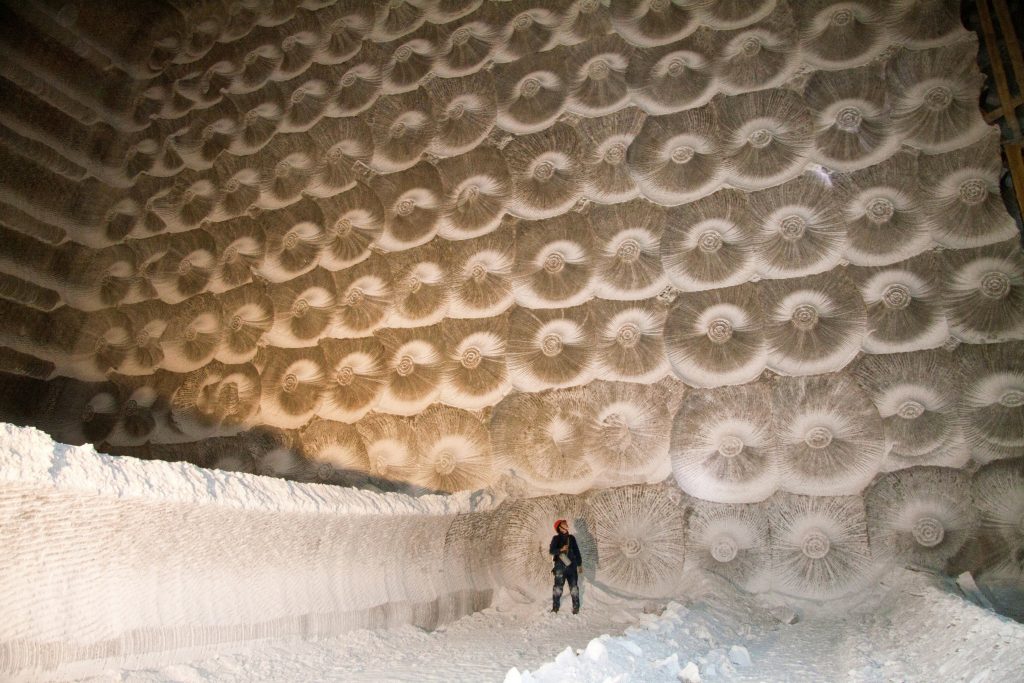
Table salt, also known as sodium chloride or halite, evaporated from ocean water is an essential part of the human diet. The terrestrial evaporites are considered medicinal: health resorts have been built on the shores of salt lakes and the deposits can have substantial economic value as cosmetic and therapeutic products. Nitrates for use in fertiliser and explosives are also found in evaporite deposits, and oil reserves are sometimes trapped by underground layers of salt.
Unfortunately, these topographical traps also collect pollution and nutrients from the uphill lands. One of the legacies humans will leave for future geologists are unexpected chemicals mixed in with salt.
Flats, pillars, domes, caves, glaciers
Salt can create strange shapes and bizarre crystals that have long fascinated people. The remarkably flat saltpans or playas left behind by evaporated salt lakes are the most structurally simple places on Earth, with little in the way of vegetation or rocks. On the edges of the salt lakes and pans, salt can crystallise onto nearby rocks in an attractive crust.
Over the Earth’s long history, many deep deposits of oceanic salt have been laid down and shifted within the other rock layers. Salt mines can be dug, with some of the most famous in Poland and Pakistan. Salt under pressure flows like water ice: In some situations, it is less dense than rock and can begin floating up through rock layers as a dome or plug. These domes are often associated with oil reserves, since they signal the presence of an underground “pan” upon which the oil is trapped.
It can also be pushed up by geological pressures, and arise as salt mountains or pillars such as Mount Sodom at the Dead Sea. Within these salt regions, caves can be formed in a similar fashion to the dissolving of limestone, and rare formations of stalactites can be found made entirely of salt. In the mountains of Iran, layers of salt have been exposed on steep slopes and have begun spilling out and flowing downhill in a semi-solid state. These are perhaps the strangest and most unexpected of salt geographies: salt glaciers.
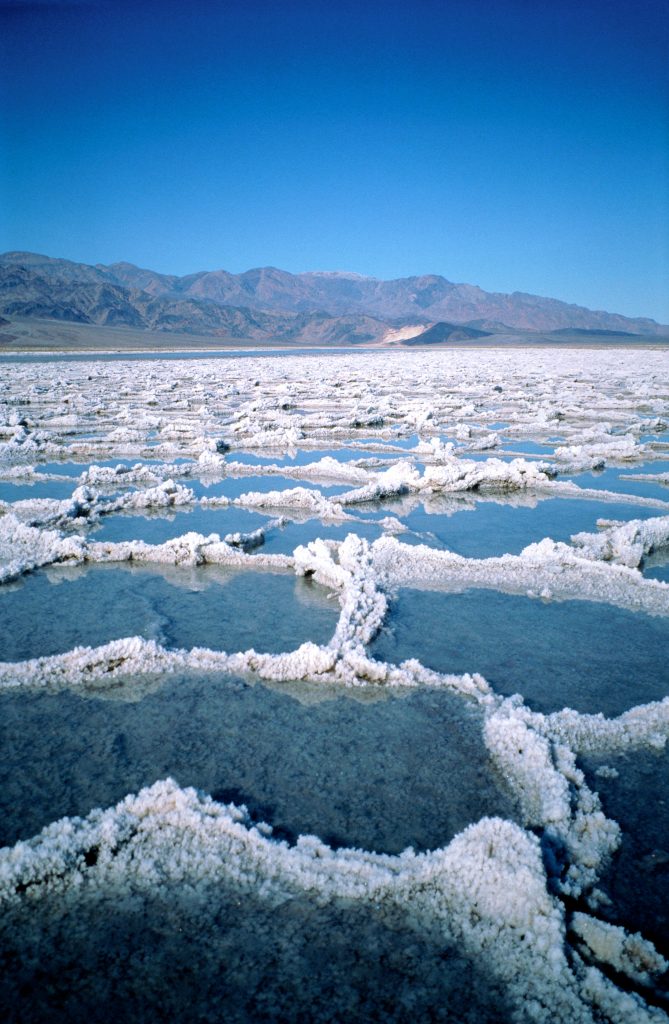
A concentration of life
Salt lakes and flats have long been considered dead zones. But modern surveys have discovered rich biological activity at the microscopic level. These “halophilic” – salt-loving – microbial communities include not only diverse bacteria, but also members of a more unconventional and interesting biota. The Archaea are a broad group of organisms that are only distantly related to animals, plants, fungus, and bacteria; they include “extremophiles” that can survive in the most chemically intense places on Earth.
Like undersea volcanic vents, ice caves, and terrestrial hot springs, hypersaline environments are home to microorganisms with remarkable abilities. Salt-loving organisms have special techniques to survive ultraviolet radiation, dehydration, and salt overdose, and their discovery has shown us new directions in biochemistry. They also remind us that extraterrestrial life may thrive in unexpected locations.
In the course of our own evolution, we’ve carried around our own supply of hypersaline water – our blood is effectively concentrated ocean water. It may be that rather than being an austere zone of death, hypersaline environments are intense reminders of our own living chemistry.
For more stories and photos, check out Asian Geographic Issue 114.


